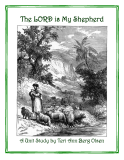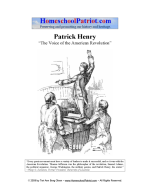

for my Newsletter
My Websites








My Products










My Affiliates



~ May 2012 ~
Dear Readers,
The month of May is National Military Appreciation Month, which includes VE Day (8th), Military Spouse Appreciation Day (11th), Armed Forces Day (19th), and Memorial Day (30th). Because most holidays commemorating historical military events have become little more than three-day weekends lacking focus on their original purpose, this month is needed to remind us of the sacrifices that have been made by the men and women who have served throughout more than 230 years of our nationís history. In general, military people do not choose to serve because they have great expectations of fame or reaping huge rewards from military service. Most are ordinary citizens with simple motives Ė honor, duty, and love of country. We ask them to willingly risk their lives on a momentís notice; shouldnít we recognize their contributions as well? As we honor patriots of the past who have given their lives in defense of the freedoms that we all enjoy today, let us also recognize the heroes of the present. When you see a person in a military uniform, shake their hand and say "thank you for serving our country!"

Featured Article
Make Your Own MuseumMay 18 is International Museum Day. For a fun and educational field trip, plan on visiting a museum near you this month. Even better, how about starting your own museum! A home museum can become an ongoing educational project that provides a focus for curious kids. First you will need a display case for storing and showing off your museum's collections. This confines everything to one place, rather than having things strewn all around the house.
You donít have to purchase a beautiful glassed-in cabinet; an inexpensive bookcase will suffice. Place it in a corner of the basement, family room, in a spare bedroom, or at the end of a hallway. Or put a metal storage unit in the garage or on the patio. If you canít set aside an entire bookcase, try to fit a small display on a single shelf. A portable mini museum might be kept in a cardboard box or plastic crate. Items such as rocks and shells that wonít be harmed by the elements can be displayed outdoors.
Once everything is located in one place, your children will be more likely to weed out their assortment themselves, keeping the best-looking specimens and tossing out the duplicates. If display space is limited, consider making it a rotating exhibit. The rest of the objects can be stored away in boxes out of sight in a closet, garage, or shed. Even large museums do not always display their whole collections at the same time. Objects may attract more interest in a collection that changes periodically.
Identifying finds is like a detective game. Every object is full of clues to be uncovered by examining it with a magnifying glass, describing how it looks and feels, etc. You never know what you might learn about an item by searching online or at your local library. Once the kids have identified a piece, they can be creative in labeling and displaying it.
Museum workers keep records of everything in their collection. They number each object, write a detailed description of it, and photograph it. The description tells where, when, and how the object was found, who found it, the age and value of the object, and the historic or scientific importance of the object. Children can do the same thing.
After the labels and/or descriptive cards are made, the kids can work on organizing and displaying their found objects just like in a real museum exhibit. Specimens can be attached to sheets of cardboard, contained in baby food jars, mounted on Styrofoam trays, placed in cigar boxes, shown off in velvet jewelry boxes, put in egg cartons, etc.
Children may even want to make their own interactive exhibits. For example, if they have a sample of real gold and foolís gold (pyrite), they could mount them side by side and challenge guests to identify which is which. Or they could ask visitors to guess, by touch, the identities of objects hidden inside a shoe box.
There are plenty of museum jobs in addition to the main task of research and identification. Try to get the whole family involved. Assign jobs based on individual interests and abilities. For example, an artistic child might be given the position of museum calligrapher for making fancy labels and signs. He or she may also be needed to help make scenic backdrops or dioramas.
Consider the following museum duties and how they can be utilized in a home museum:
1. The museum director or curator is in charge of one or more of a museumís collections. He may buy objects, trade with other museums, or take donations of gifts from people.
2. Scouts search for treasures to add to the museumís collections.
3. Conservators protect objects by treating and storing them so they wonít decay.
4. Restorers clean objects and repair them if necessary.
5. Guides give tours of exhibits to visitors, and may provide brochures and/or tape recordings.
6. Security guards keep valuable treasures safe.
7. Janitors clean glass cabinets and dust off displays.
Once you begin a home museum, you may find that the search for new specimens never ends. A home museum may include feathers found in the backyard, pinecones from a walk in the woods, crystals from a geology field trip, vials of sand from beach vacations, and other precious treasures. You can pick up specimens from museum gift shops, nature stores, and science supply catalogs. While on a family vacation, you can be on the lookout for things to bring back. Perhaps friends, grandparents or other relatives will contribute souvenirs from their travels, or samples from their own collections.
Museum pieces donít have to be natural objects, either. Some children have displays of Lego models on shelves in their room. A model car enthusiast may set up an exhibit of die-cast cars. Other people like to display dolls, photos, or artwork. Stamps, and coins are museum-quality collectibles that donít take up much space. It seems that anything and everything has been collected by someone at one time or other, and any type of collection could be made into a museum.
A home museum is the ultimate hands-on learning center, enabling children to absorb knowledge without even realizing it. Subjects such as science, geography, writing, and more will be delved into as they study their finds. Taking care of a museum will help kids to cultivate their interests, set goals, refine their creative talents, improve their organizational abilities, develop concentration and thinking skills. Itís a good motivator for writing, science, and art. Plus, itís something they will be enthusiastic about spending their time on.
Have fun, and happy collecting to you!
Book of the Month
Educational Words of Wisdom

Treat yourself to this treasury of classic and contemporary rhetorical gems that will inspire and encourage you! Learning for Life contains almost 3,000 quotes by more than 1,000 people on teaching, learning, and the pursuit of knowledge - as well as a whole chapter of quotations about ďMothers & Motherhood.Ē Quotes are categorized by subject, covering both traditional and nontraditional forms of education. Itís like a conversation across the ages, full of rhetorical gems and sage advice! (Includes Bible verses, index, appendix & biographical notes.) Makes a unique Mother's Day gift!
SEE ALSO: Ode to a Homeschool Mom - This poem is a unique gift for your favorite homeschool mom!
Famous Homeschoolers
Homeschool graduate Scott MacIntyre Ė the acclaimed singer, songwriter, pianist, and American Idol Season 8 finalist Ė has released his first book called By Faith, Not By Sight. Learn more about Scott and his book here.
Reading Between the Lines
The second week in May is National Etiquette Week. According to the legendary Emily Post, etiquette is today what it has always been: a code of behavior based on kindness, consideration and unselfishness. This is something that must never change. Manners, which are derived from etiquette, should be maintained even in an ever-changing world. Etiquette is for persons at every stage of life regardless of age, income, or position in society or business. Good manners are just as important for young children as they are for older adults.
In past generations, people of all ages were not only expected to always behave properly, but they understood the value of demonstrating good manners and morals. Take, for example, the great American patriot George Washington. His lessons in good breeding came from a book of precepts entitled "Rules of Civility & Decent Behavior in Company and Conversation," which listed 110 rules of behavior for young men. The Rules of Civility were originally compiled and published in 1595 by French Jesuits. In 1645, this code of conduct was translated into an English version called "Francis Hawkinsí Youths Behavior, or Decency in Conversation Amongst Men," and was reprinted at least eleven times until 1672.
One copy of this English translation came into the possession of young George when he was 12 years old. Sometime before he turned 16, Washington carefully hand-copied the rules into a notebook as an exercise in penmanship. At the same time, these rules taught Washington the proper behavior that we call etiquette including how to dress, walk, talk, and eat. They also conveyed a moral message of humility and paying attention to those around you. The teenage Washington took these rules to heart, and he grew up to be one of the greatest men who ever lived.
Sadly, the modern generation has fallen so far away from the Washington standard that the habits and actions of many people today seem vulgar and embarrassing in comparison. We would be wise to take Washington's rules of civility into our hearts and internalize the values he strived to maintain for all his days. Although some of the rules may seem a little silly and outdated, most are valuable and timeless lessons for us all. Click here to download a copy of George Washington's Rules of Civility.
Mother's Day (It's YOUR day - you deserve it!)
Etiquette and Ethics (The second week in May is National Etiquette Week. This web page includes a link for a FREE downloadable e-book!)
A Salute to Soldiers (May is Military Appreciation Month.)
Physical Education (May is Physical Fitness and Sports Month.)
Bikes and Bicycling (May is also National Bike Month!)
Memorial Day (A special day to honor our fallen veterans.)
Here are two more household lists (in one PDF document):
Stocking a Home Survival Kit / Portable Emergency Kit
Print out the above pages to keep in a binder. Throughout the year, I will supply additional printable household lists in each issue of this newsletter. Want to print out a matching cover for that binder? Click here: Household Notebook Cover
(Requires Adobe Reader: click here for free download.)
ďThe world's favorite season is the spring. All things seem possible in May.Ē ~Edwin Way Teale
Check out my newest website: Homeschool Library. This site features an extensive Library of Links to support all of your learning needs! Each link is reviewed and filed according to the Dewey Decimal Classification System.
The Homeschool Library provides easy access to thousands of educational websites and web-based learning activities in a wide variety of subject areas for all ages!
Homeschool for FREE, with the convenience made possible in this age of information. The helpful post categories, and pages organized by subject and grade, will enable you to quickly find just what youíre looking for!
Subscribe to receive a Link of the Day via e-mail: click here!
Happy Homeschooling!
P.S. Did you like this month's newsletter? Learning Links
Freebie of the Month
Quote of the Month
A Note From Teri...
